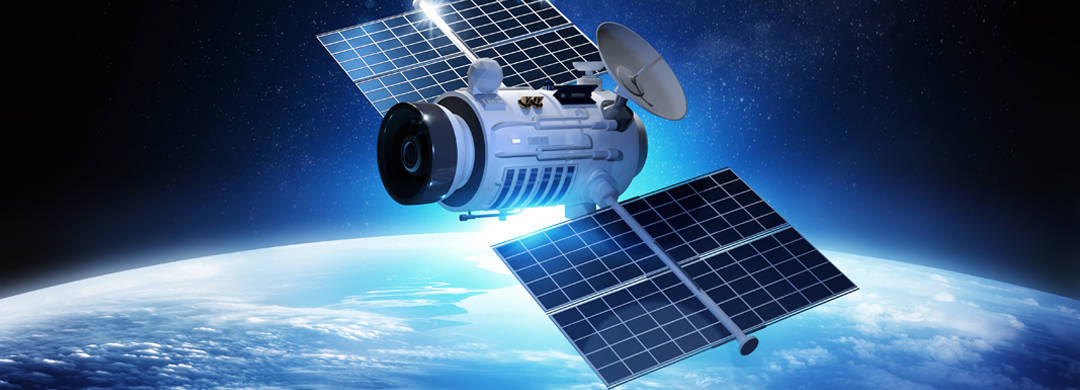Manufacturing in Space
By John Guite
Manufacturing in Space – It’s a thing and there are several companies now working to figure out the complexities and solve the challenges of manufacturing and assembling products in low-earth orbit and beyond.
 Indeed the potential benefits of manufacturing in space are numerous and space manufacturing monetizes and makes the commercial space industry profitable. Commercial space travel alone does not provide the profit motive to build and continue the momentum of commercial space development. It is cool to see William Shatner and other celebrities fly to space but at some point, something useful needs to happen in space for it to be profitable and worthy of future investment. Manufacturing products in space, for usage in both space and on earth, provides this opportunity. In 2019, according to Harvard Business Review, of the estimated $366 billion in revenue earned in the space sector, 95% was from goods or services produced in space for use on earth.
Indeed the potential benefits of manufacturing in space are numerous and space manufacturing monetizes and makes the commercial space industry profitable. Commercial space travel alone does not provide the profit motive to build and continue the momentum of commercial space development. It is cool to see William Shatner and other celebrities fly to space but at some point, something useful needs to happen in space for it to be profitable and worthy of future investment. Manufacturing products in space, for usage in both space and on earth, provides this opportunity. In 2019, according to Harvard Business Review, of the estimated $366 billion in revenue earned in the space sector, 95% was from goods or services produced in space for use on earth.
What Products Can Be Manufactured In Space?
But what products make sense to be manufactured in space? Obviously, manufacturing in space is not inexpensive so products need to have very compelling cost, quality, or convenience advantages to being made in space. Some examples of products being evaluated for space manufacture are:

- ZBLAN & Fiber Optic cable – 1kg of ZBLAN used to manufacture fiber optic cable can cost as much as $1 million. Making ZBLAN in space takes advantage of microgravity to improve the dispersion and performance of fiber optics.
- Similarly, superalloys benefit from microgravity and the vacuum of space to improve material dispersion and reduce oxidizing layers.
Stem cell-based production
Companies are evaluating 3D printing functioning human hearts from stem cells in space. Once again, the microgravity atmosphere in low-earth orbit makes it technically possible to print a human heart to ensure that all the cells and tissues are organized and located appropriately. Also, due to advances in 3D printing technology in space the speed with which a heart can be printed should be faster than that on earth. Imagine needing a heart transplant, ordering a heart printed in space, and less than two months later having your replacement heart ready for implant. Another area of research in biologics is the production of food in space. Companies are now looking at creating “slaughter-free meat” by growing bovine cells from earth in space using 3D printing. This can be used to provide food to astronauts and future space travelers.
ensure that all the cells and tissues are organized and located appropriately. Also, due to advances in 3D printing technology in space the speed with which a heart can be printed should be faster than that on earth. Imagine needing a heart transplant, ordering a heart printed in space, and less than two months later having your replacement heart ready for implant. Another area of research in biologics is the production of food in space. Companies are now looking at creating “slaughter-free meat” by growing bovine cells from earth in space using 3D printing. This can be used to provide food to astronauts and future space travelers.
Micro-chip and wafer production
Gallium arsenide (GaAs) is superior to silicon in several aspects in semiconductor applications such as solar panels, defense and aerospace. However, the manufacturing of GaAs wafers on earth is highly toxic. Manufacturing in space can reduce the concern of disposal of this toxic waste.
 Additionally, GaAs wafers can be produced in space with significantly improved quality due to microgravity. Also, research is being conducted into the reduction of water consumption during the micro-chip manufacturing process in space. One 12” integrated circuit manufactured on earth can consume over 2,000 gallons of water for cleaning and cooling. This could be dramatically reduced given the vacuum and temperature properties in space.
Additionally, GaAs wafers can be produced in space with significantly improved quality due to microgravity. Also, research is being conducted into the reduction of water consumption during the micro-chip manufacturing process in space. One 12” integrated circuit manufactured on earth can consume over 2,000 gallons of water for cleaning and cooling. This could be dramatically reduced given the vacuum and temperature properties in space.
Manufacturing Equipment for Space In Space
Finally, manufacturing space equipment itself can benefit from manufacturing in space. Currently, satellites designed on earth are subject to the physical size restrictions of a launch vehicle and must be designed to withstand the rigors of a launch. Shipping components to space and assembling space stations in low-earth orbit allows for larger and more functional stations for people to inhabit. Also, this may allow for more standardization on lower-cost rockets.
A Pedigree in the Space Market
At Technetics we get excited about this type of out-of-the-box thinking and we are proud to make it all possible by providing the seals and over-pressure solutions used on many launch vehicles today. We have the pedigree and experience to provide the robust solutions that the commercial space industry requires now and in the future.
References: Axiom Space. [company website]. https://www.axiomspace.com/manufacturing/alloys-superalloys
RedWire. (2020, June 22). How In-Space Manufacturing Will Impact the Global Space Economy [article]. https://redwirespace.com/newsroom/how-in-space-manufacturing-will-impact-the-global-space-economy/
Voyager. (2021, March 13). How Space Manufacturing is a $158 billion Industry
YouTube. https://www.youtube.com/watch?v=3wRGY90KiuI
Harvard Business Review. (2021, February 12). The Commercial Space Age Is Here [article]. https://hbr.org/2021/02/the-commercial-space-age-is-here
The Times of Israel. (2019, October 8). In first, Israeli company grows meat in space [article]. https://www.timesofisrael.com/in-first-israeli-company-grows-steak-in-space/
All About Circuits. (2019, August 23). Gallium Arsenide: Another Player in Semiconductor Technology [article]. https://www.allaboutcircuits.com/news/gallium-arsenide-another-player-in-semiconductor-technology/


